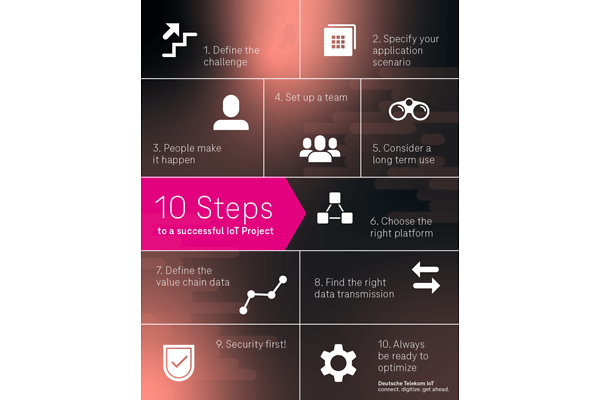Optimal connectivity is the basis of a successful IoT project because everything is connected on the Internet of Things, but not every technology is suitable for every use case. Companies should establish as early as possible which transmission standard they need for their IoT devices. That will depend in particular on how much data is to be transmitted via the network how frequently and from where to where. If, say, the device is in a basement, good building penetration is important. If data volumes and transmission frequencies are low and the hardware is to be as maintenance-free as possible, NarrowBand IoT (NB-IoT) is the solution. It is an especially energy-efficient standard so that IoT devices can run on it for several years on one battery. If, in contrast, large data volumes are to be transmitted frequently, 4G or LTE and 5G are more suitable. In addition, 5G facilitates latencies of less than a millisecond, which is a prerequisite for safe navigation of autonomous transport robots.



